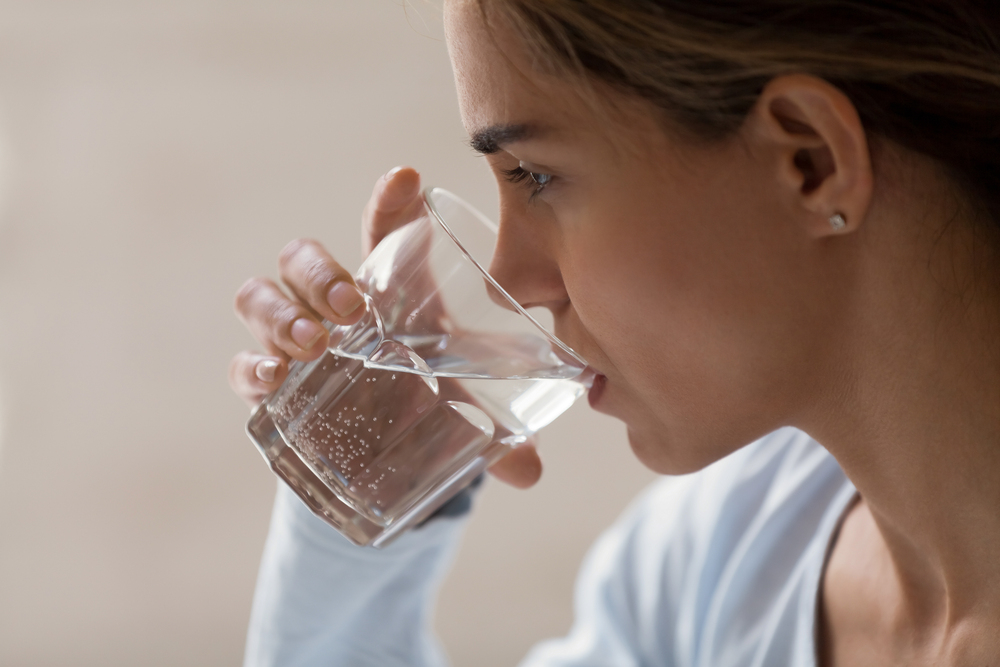Dehydration – how to recognize the first symptoms? We explain!

Dehydration is a condition of excessive loss of water and electrolytes from the body, which can affect anyone. It usually develops gradually, but its first symptoms are often underestimated. Meanwhile, if you don’t react in time, the consequences can be very serious.
How to recognize dehydration in adults, and how in children? What does a dehydrated person look like? When does water loss in the body become life-threatening? How can you rehydrate your body quickly?
Table of Contents
- Dehydration – What It Is And Why It’s So Dangerous
- The Most Common Causes Of Dehydration – From Heat To Chronic Diseases
- Symptoms Of Dehydration – How To Recognize Them In Time?
- Severe Dehydration – When Does Water Loss In The Body Become Life-Threatening?
- Effects Of Dehydration – What Happens In Our Body?
- Treatment Of Dehydration – Effective Ways To Rehydrate Quickly
- How To Prevent Dehydration On A Daily Basis?
- How To Stay Hydrated? How Much Water To Drink And Which Fluids To Choose?
Dehydration – What It Is And Why It’s So Dangerous
Dehydration is a condition in which the amount of fluids and electrolytes in the human body drops below the proper level. The water content in the body decreases with age. In newborns, it usually makes up about 75% of body weight, while in elderly people it can be around 50%. Its concentration in the body depends on age, gender, and the amount of body fat.
Water accounts for more than 60% of an adult’s body weight, but even a small loss (1–2%) can impair concentration, efficiency, and overall well-being. More serious disturbances in the water-electrolyte balance can lead to neurological symptoms, heart and kidney problems. In the case of dehydration, when the water deficit exceeds 8% of body weight, there is a real threat to life.
The Most Common Causes Of Dehydration – From Heat To Chronic Diseases
Dehydration doesn’t happen only during hot weather or intense physical activity. Chronic illnesses, viral or bacterial infections, as well as vomiting or diarrhea also increase the risk of dehydration. Water loss in the body rises when:
- there is fever, diarrhea, and vomiting
- kidney diseases develop
- uncontrolled or untreated diabetes occurs
- body temperature increases
- hemorrhagic shock appears due to low blood volume
Taking certain medications, especially diuretics, can also reduce the amount of water in the body. Dehydration often develops unnoticed, but its effects can be very serious for both well-being and health.
Who Is Most At Risk Of Dehydration?
Small children, elderly people, and patients struggling with chronic diseases are especially at risk of dehydration. In infants and children, the amount of fluids in the body is smaller, and losses progress faster. What’s more, small children often can’t say when they are thirsty. In seniors, the body’s fluid reserves decrease with age, and the feeling of thirst weakens. Athletes, people doing physical labor, as well as pregnant and breastfeeding women are also at higher risk of dehydration.
Symptoms Of Dehydration – How To Recognize Them In Time?
The first symptoms appear quickly and are easy to spot if you learn to carefully observe your body. Ten signs that you are drinking too little water are:
- increased thirst
- dry mouth
- darker urine and urinating less often
- headaches
- drowsiness
- fatigue
- dry skin
- rapid heartbeat
- feeling dizzy
- problems with concentration
It’s also worth knowing that there are unusual symptoms of dehydration, such as motor coordination disorders, apathy, nausea, or irritability.
You can check for dehydration in a simple way by looking at the color of your urine. A dark, amber color is a warning sign. Excessive fluid, water, and electrolyte loss in the body can also be detected with a quick skin pinch test on the back of your hand. Just pinch the skin and watch how fast it returns to its original shape.
Signs Of Dehydration In Children And Infants – Warning Signals For Parents
Dehydration in a child develops faster than in an adult. Water loss is especially dangerous in infants, as they cannot communicate their thirst. Signs of dehydration include no tears when crying, a dry tongue, no wet diaper for several hours, and in the youngest children, a sunken fontanelle. Irritability and apathy are also signals that the body’s fluid balance is disturbed and immediate rehydration is needed.
Severe Dehydration – When Does Water Loss In The Body Become Life-Threatening?
Severe dehydration requires immediate medical attention. In this condition, neurological symptoms of dehydration often appear: confusion, seizures, and even loss of consciousness. There is also rapid breathing, irregular heart function, accelerated pulse, and a reduction in circulating blood volume.
This is a situation where urgent hospitalization and proper treatment are essential, as it may lead to shock, kidney failure, or even death.
Effects Of Dehydration – What Happens In Our Body?
Even moderate dehydration affects our daily functioning. A lack of adequate water in the body leads to reduced performance, decreased concentration, and weakened memory. Water–electrolyte imbalances, such as a deficiency of sodium, potassium, or glucose, also negatively impact muscle function and the nervous system.
Severe dehydration, which is particularly dangerous for children and the elderly, may also result in kidney damage and circulatory disorders.
Treatment Of Dehydration – Effective Ways To Rehydrate Quickly
The treatment of dehydration largely depends on its severity. What helps with dehydration? In mild cases, it is usually enough to rehydrate the body by drinking water and isotonic beverages containing sodium, potassium, and glucose. When diarrhea is accompanied by vomiting, oral electrolyte solutions can be very helpful.
In more serious situations, when dehydration requires medical intervention, intravenous water–electrolyte infusions are used.
How To Prevent Dehydration On A Daily Basis?
The most important thing is to drink water regularly throughout the day. Don’t wait until you feel thirsty, as that’s already a signal of deficit. Keep in mind that water requirements depend on many factors, including gender, environmental temperature, and physical activity.
It is generally assumed that an adult should drink between 1.5 and 2.5 liters of water per day. Fluids are also supplied to the body through vegetables and fruits, so make sure to include enough of them in your daily diet. If you want to avoid dehydration, also remember to monitor the color of your urine and how often you urinate.
How To Stay Hydrated? How Much Water To Drink And Which Fluids To Choose?
The human body is made up of nearly 70% water, which we lose through processes such as breathing and sweating. That’s why replenishing these losses is so important. Sugary carbonated drinks or strong coffee cannot replace water during the day.
The best choice is mineral water, but you can also include herbal teas, diluted juices, and in case of significant fluid loss, isotonic drinks. A good practice is to drink a glass of water after waking up and before each meal, which helps maintain stable hydration and prevent dehydration.

